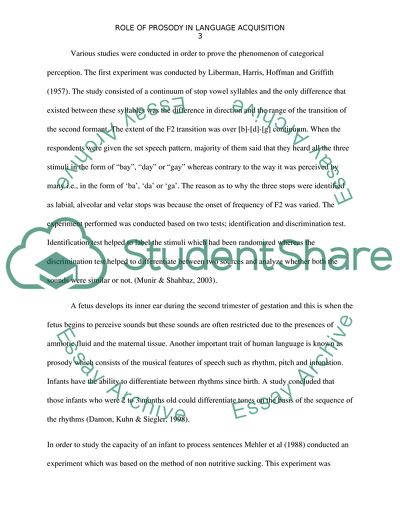Cite this document
(Role of Prosody in Language Acquisition Essay Example | Topics and Well Written Essays - 1681 words, n.d.)
Role of Prosody in Language Acquisition Essay Example | Topics and Well Written Essays - 1681 words. https://studentshare.org/education/1877174-discuss-the-role-of-prosody-ie-rhythm-and-intonation-in-language-acquisition-from-early-sound-perception-to-semantic-and-syntactic-developmentapos
Role of Prosody in Language Acquisition Essay Example | Topics and Well Written Essays - 1681 words. https://studentshare.org/education/1877174-discuss-the-role-of-prosody-ie-rhythm-and-intonation-in-language-acquisition-from-early-sound-perception-to-semantic-and-syntactic-developmentapos
(Role of Prosody in Language Acquisition Essay Example | Topics and Well Written Essays - 1681 Words)
Role of Prosody in Language Acquisition Essay Example | Topics and Well Written Essays - 1681 Words. https://studentshare.org/education/1877174-discuss-the-role-of-prosody-ie-rhythm-and-intonation-in-language-acquisition-from-early-sound-perception-to-semantic-and-syntactic-developmentapos.
Role of Prosody in Language Acquisition Essay Example | Topics and Well Written Essays - 1681 Words. https://studentshare.org/education/1877174-discuss-the-role-of-prosody-ie-rhythm-and-intonation-in-language-acquisition-from-early-sound-perception-to-semantic-and-syntactic-developmentapos.
“Role of Prosody in Language Acquisition Essay Example | Topics and Well Written Essays - 1681 Words”. https://studentshare.org/education/1877174-discuss-the-role-of-prosody-ie-rhythm-and-intonation-in-language-acquisition-from-early-sound-perception-to-semantic-and-syntactic-developmentapos.


